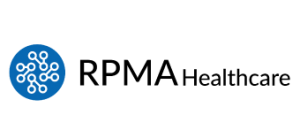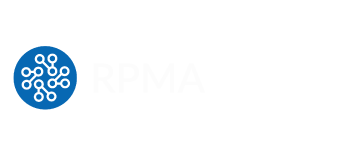Growing Investments in Telehealth and RPM Solutions

Telehealth & Remote Patient Monitoring (RPM) solutions enable risk-bearing organizations to remotely monitor and manage high-risk patients with chronic conditions including CHF, COPD, Diabetes, Hypertension, and Asthma to help control healthcare costs, improve care quality and outcomes and increase access to care for patients living in underserved rural/remote areas. There are now numerous RPM solutions out there, including a select few that have had very favorable outcomes toward meeting the quadruple aim – improved patient experience, improved clinical experience, better outcomes, and lower costs.
Healthcare providers have discovered that RPM solutions are clinically useful as an early symptom management tool when used to support patients participating in disease management and care coordination program to automate the collection of patient vital signs and symptomatic data, and proactively identify if a patient’s condition is deteriorating or becoming life-threatening. Common chronic conditions monitored include congestive heart failure, Chronic obstructive pulmonary disease, diabetes, asthma, and hypertension.
With these benefits in mind, some of the largest healthcare companies are embracing telehealth and RPM with open arms, investing millions of dollars into new telemedicine platforms, digital records systems, remote patient monitoring tools and the Internet of Things. Recent polling shows that 83% of healthcare organizations are likely to invest in telehealth, and 84% believe offering telehealth services will allow their organizations to increase their reach and coverage areas.
Healthcare provider investments in RPM solutions are being driven by several underlying market factors, including exploding healthcare costs, a rising ageing population, the increased prevalence of chronic diseases, and continuous healthcare professional labor shortages. Burnout continues to be a prevalent issue for physicians. Ernst and Young’s 2018 survey on digital health revealed that almost 65% of physicians believe that “technology that captures consumer-generated data will reduce the burden on doctors and nurses specifically.”
Remote monitoring allows patients with non-critical conditions to remain at home and manage their own care, reducing unnecessary in-person visits. It also affords providers and care teams more opportunities to ‘work at the top of their license’ and spend more time with high-risk patients. Remote monitoring technologies enhanced with Artificial Intelligence (AI) tools, such as those from advances in analytics and machine learning, can also automate non-essential tasks within providers’ workflows by offloading manual tasks, such as data entry, with automated processes. Providers can analyze aggregated PGHD (patient-generated health data) collected through remote monitoring to derive actionable and valuable insights on patient populations. In addition, analytics algorithms take real-time data into account, rather than static information collected during episodic visits, which enables providers to better understand why a patient is experiencing a specific outcome. Collecting and monitoring PGHD between visits also creates more opportunities to detect potential health issues that could otherwise go undetected. Remote monitoring technologies generate documentation of events, signs, symptoms, and interventions, potentially reducing provider liability.
Recent studies find around 88 percent of hospitals and health systems have invested or plan to invest in remote patient monitoring (RPM) solutions to help care managers monitor and manage complex, high-risk patients with chronic conditions who are considered unstable and at-risk for hospital readmissions and/or emergency department visits.
Cost avoidance is one of the primary investment drivers for RPM solutions, which has been beneficial to organizations by reducing hospital readmissions, emergency department visits, and overall healthcare utilization. In contrast to traditional care that requires costly in-person visits and patients bringing their data into the clinic via spreadsheets, notebooks, or disparate apps, remote monitoring programs passively and continuously collect and transmit patient-generated health data from in-home medical devices to providers and care teams. PGHD, when compared to health data collected exclusively during in-person doctor’s visits, more accurately and holistically reflects lifestyle choices, health history, symptoms, medication, treatment information, and biometric data such as heart rate, blood glucose, blood pressure, temperature, oxygen levels, and weight.
Financial benefits derived from RPM and PGHD take the form of cost savings from reduced hospital readmissions, in-person visits, nurse engagements, and emergency department visits. Hospitals can also avoid penalties for readmissions within 30 days of discharge by implementing programs that help clinicians intervene before an adverse health event can occur. Additional financial benefits include lower operational costs, such as a reduced number of bed days when admitted to the hospital and reduced overall resource utilization. Improving health outcomes with early intervention, chronic care management, and increased patient engagement is a worthwhile endeavor financially when remote monitoring is scaled beyond disparate pilots and used to manage health outcomes more proactively. At a time when care continues to become more expensive, and hospitals are routinely expected to cut costs while improving care, these financial savings can be critical.
Early market adopters of RPM solutions are capitated managed care organizations with fiscal responsibility for their patients across the spectrum of care. This includes accountable care organizations, health maintenance organizations, home health agencies, hospices, disease management companies, and government.
89% of providers have developed or are in the process of developing engagement strategies to encourage patients, family members, and caregivers to take a proactive role in managing their chronic conditions. They are leveraging mobile technologies, including Smartphones and Tablets, deploying EHR-based patient portals, offering telehealth video conferencing services, and evaluating emerging healthcare wearables.
Financial benefits for the care provider (the one, which invests in information and communications technology infrastructure, the RPM technology itself, as well as the clinical and care services), those will include; lower costs in providing staff efficiencies, travel costs for the staff, and higher payment from the payer as an incentive for avoiding more expensive procedures or penalties. There is also the benefit of no overcrowded facilities, especially when it comes to patients with chronic diseases. When it comes to the care provider, it is easier to make accurate ROI(Return on investment) calculations as all benefits are cost-tied, as opposed to many personal benefits in the case of patients and their families.
The healthcare industry has been steadily investing in telehealth for years with some organizations further along than others. According to a recent report, 56% of healthcare executives say they have already implemented telemedicine in their organization. Another 24% are currently looking for telemedicine solutions, and 20% are just starting to learn about telehealth and explore their options.
Choosing to invest in telehealth can be a complicated decision for some providers. Updating the current system can take years as these companies figure out ways to incorporate these new platforms into their current operations. With so much money at stake and lots of options and applications to choose from, some companies are easing into the digital healthcare revolution while others are diving in head-first by pouring millions of dollars into telemedicine platforms.
While still reasonably modest, telehealth budgets are growing year after year. Roughly 66% of organizations with telemedicine systems have an annual telehealth budget of $250,000 or less, 24% have an annual telehealth budget of $250,000 to $1 million, and 9% have a budget of over $1 million. These numbers will continue to grow as telehealth reimbursement rates rise, and more providers learn about the benefits of telehealth.
With cost-saving benefits and more flexibility for patients and providers, healthcare companies have good reason to invest in telehealth. Patients are starting to get on board with these programs as well. The number of global telehealth patients continues to rise year after year, reaching over 7 million in 2018. A new report shows that 74% of the surveyed consumers would be open to using telemedicine services, and 76% prioritize having access to care over the need for human interactions with care providers.
With a telehealth platform in place, patients would typically use smartphones and computers to communicate with their care providers. Many consumers already have access to these digital devices, so using them for healthcare purposes seems to make much sense. 30% of patients already use their smartphones and computers to check for diagnostic information.
As more information becomes available about telehealth and how both patients and care providers stand to benefit from these systems, patients are starting to rethink their approach to healthcare. While telehealth by no means eliminates the need for face-to-face interactions with care providers, these platforms make it easier for patients and providers to keep in touch. The average wait time for a telehealth visit is only 20 minutes, and the average cost is just $40, helping the consumer save time and money as they go about their busy schedules.
Healthcare companies need to start investing in telehealth if they want to keep their customers satisfied in the years to come. As more companies invest in telemedicine platforms, patients will continue to benefit from these new digital services. Companies can get ahead of the competition by investing in these new platforms sooner rather than later.












